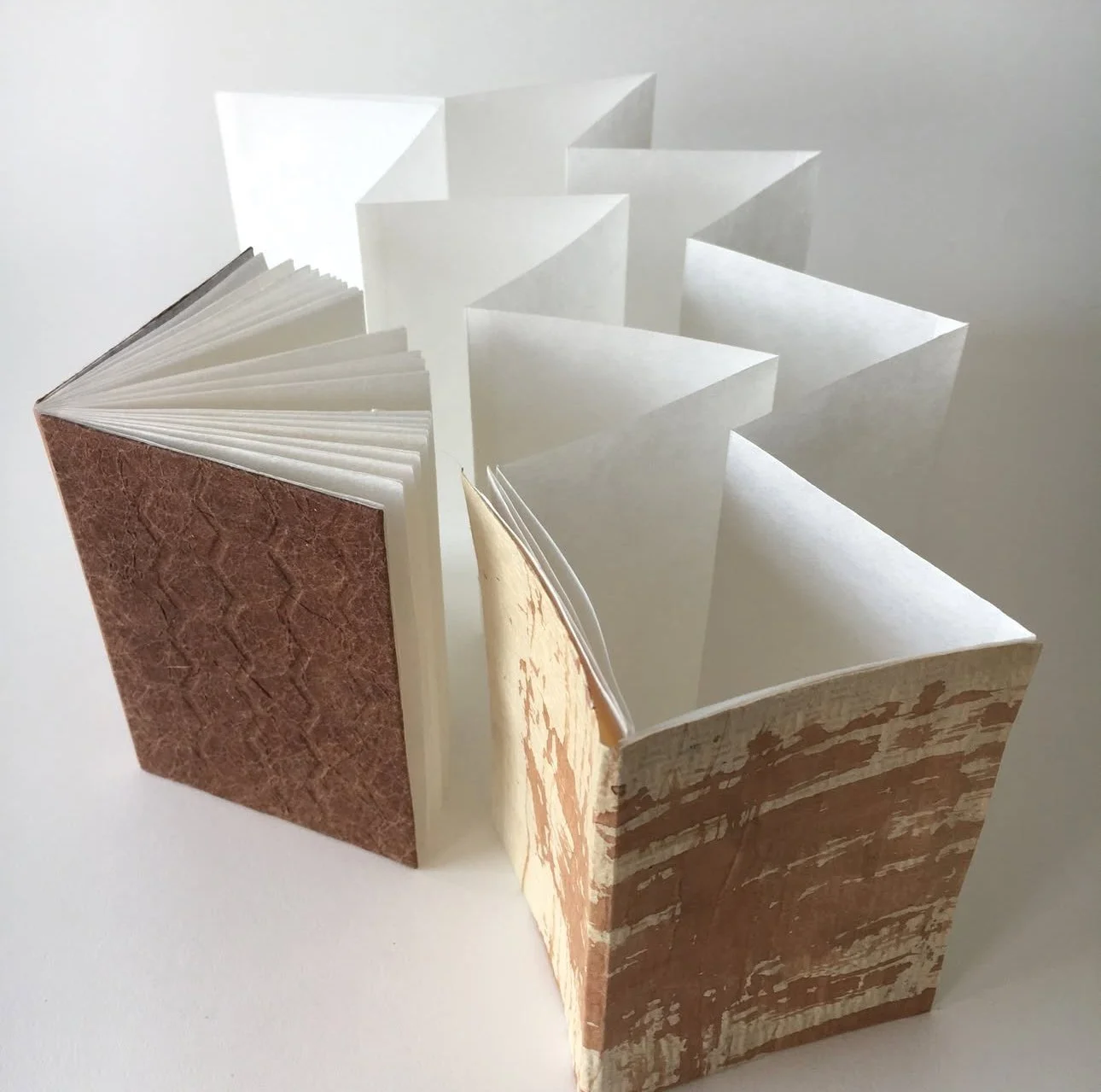Distilling the Art of Making Paper
Paper Making and Book Binding Intensive with Anne Covell, July 24-27th 2025
The Japanese art of paper and bookmaking has a rich, captivating history and technique. Washi is the light, strong traditional Japanese paper made by hand from the inner-bark fibers of three plants: kozo, gampi, and mitsumata. They are combined with only cold, clean water. Like everything traditionally Japanese an emphasis on simplicity and purity combined with a delicate resourcefulness, and the nature-driven concept of "wabi-sabi" speak to its core identity. The name washi literally means "Japanese paper". Today, most paper in Japan is made in large automated mills, but a few hundred families in rural villages continue to make washi in the traditional way.
This week, we welcome artist Anne Covell to Willow Pond for a rare opportunity to study the sacred art of Nagashizuki, papermaking, shibori (resist dyeing) and momigami (kneaded paper) as learn the craft of bookbinding. Over four rich and engaging days in the studio, Covell will build upon skills learned in each session, creating a cohesive body of work that honors the materials, methods, and aesthetics of Japanese bookmaking and paper decoration. Traditional bookmaking is a meticulous and sacred art that celebrates both functionality and aesthetics, preserving cultural heritage through each handmade volume. Japanese books feature beautifully illustrated pages, with ink and pigments carefully applied by hand. This artistic aspect is reflected in the well-known genres such as ukiyo-e, which combined literature with visual art. Handmade paper and its distinct texture enhance the visual and sensory experience of engaging with the book cover to cover.

